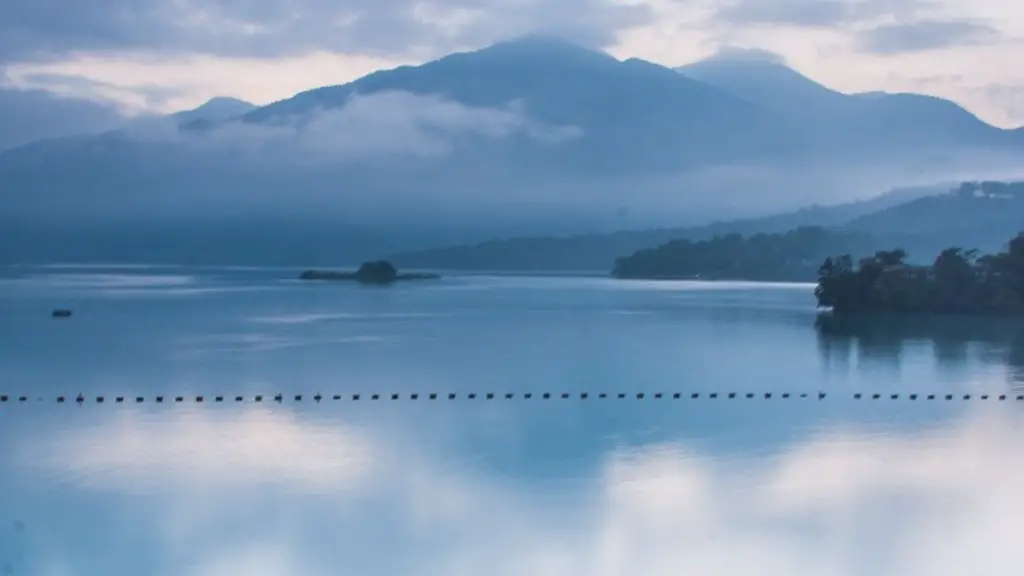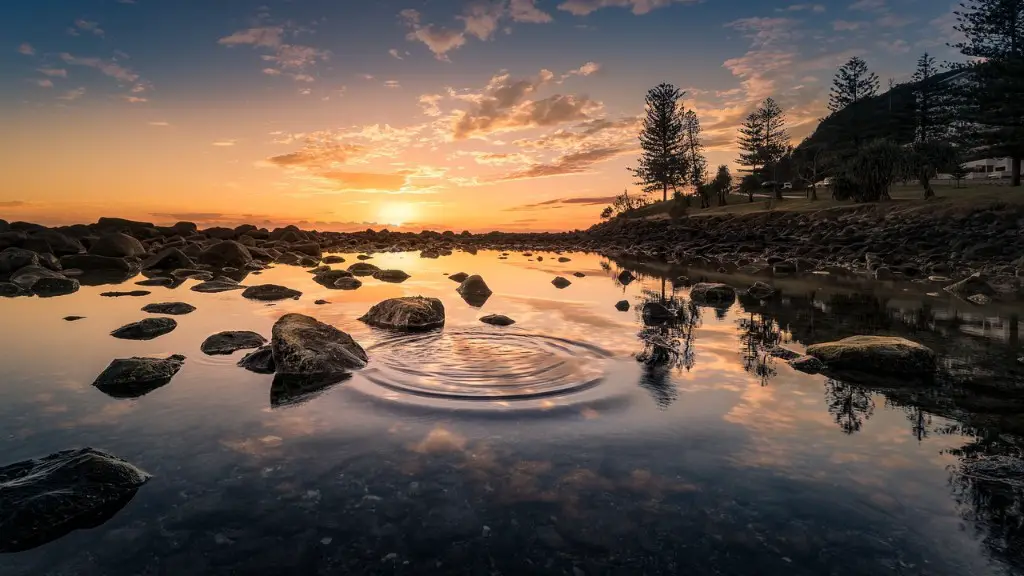Keeping cichlids in an aquarium provides an exciting opportunity for any fish enthusiast. Cichlids are some of the most vibrant and colorful fish you can find in any aquarium. Lake Malawi cichlids are especially eye-catching, and their intelligent and interactive nature makes them an ideal choice for most aquariums. If you’re considering keeping Lake Malawi cichlids in your tank, the first thing you need to consider is tank size, and the most important factor when deciding how many you should have is the capacity of your tank.
Estimating the number of cichlids appropriate for your aquarium is based on the volume of your tank. Generally, 10 gallons of water is recommended for every Lake Malawi cichlid in your tank. This means that if you own a 55 gallon tank, you can comfortably house about 5-7 Lake Malawi cichlids. However, bear in mind that this is just a guideline and the capacity of your tank may be significantly different. Always use your best judgement when stocking your aquarium and consider the fish’s environment and the amount of space needed for them to survive and thrive.
It is worth bearing in mind that as cichlids are hardy fish, they can often handle overcrowding in tanks better than many other fish species. This makes it easier for you to add a few more Lake Malawi cichlids beyond the general guidelines, if the environment and water quality are correct. The best way to ensure the health and wellbeing of your Lake Malawi cichlids is to keep up a regular schedule of water exchanges and filter maintenance.
Another important factor to consider when stocking your tank with Lake Malawi cichlids is that species compatibility will be crucial. It is important to know a bit about the different types of cichlids available, as some species may become territorial and aggressive with other types of cichlids. If you opt to have multiple types of cichlids in your tank, look for those that have similar environment needs and can co-exist peacefully. Some examples would be Pseudotropheus Socolofi, Labidochromis caeruleus, Labidochromis yellow and Nimbochromis Venustus.
In terms of feeding, it is advisable to maintain a balanced diet for all species of cichlids. To ensure this, look for commercial cichlid food that is designed to provide a variety of nutrients, such as protein, vitamins, minerals and trace elements. When it comes to setting up your tank, always provide plenty of hiding spaces, such as rocks and caves, as cichlids love to explore and hide. This will also help to maintain peace in the tank, as the fish will be able to escape from any potential confrontations.
Lastly, do your research prior to buying Lake Malawi cichlids for your tank and read the instructions on their care carefully. As with any fish, the quality of your aquarium and the way it is maintained will have a major impact on their health and wellbeing. If you provide the ideal water parameters and plenty of hiding places, your Lake Malawi cichlids should thrive and be a delight to watch.
Gender Differences in Lake Malawi Cichlids
It is important to know the different genders of Lake Malawi cichlids, as this can help in determining how many to keep in an aquarium. Male cichlids are generally larger in size and have more vibrant colors than females. Males also tend to be more aggressive and territorial, whereas females are usually more peaceful. This means that it is important to keep a balanced ratio of males and females in an aquarium, as the females could become overwhelmed by the males domination. It is recommended to keep either two females for every male, or four females for every male.
During the spawning stage of reproductive behavior, the male cichlids will build bubble nests and display courtship behavior to entice the females. The male will then guard the eggs and their offspring until they are old enough to look after themselves. This makes it very important to have plenty of hiding places in the aquarium, as this will allow the female to escape any potential confrontations.
When it comes to introducing Lake Malawi cichlids to an aquarium, it is important to do it in the right way. Start off by introducing smaller numbers of fish to gauge their behavior, and make sure to monitor any altercations. This is especially important if a dominant male is present in the aquarium, as it will be more difficult to introduce a new male cichlid.
Compatibility with other Fish Species in a 55 Gallon Aquarium
It is possible to keep Lake Malawi cichlids in an aquarium with other fish species, as long as they are compatible in terms of water parameters, diet, and other requirements. However, bear in mind that cichlids are predators by nature, so it is important to choose carefully when selecting compatible tankmates. Do not add small fish to the tank, as they may become easy prey for the Lake Malawi cichlids. Some compatible species include convict cichlids, clockwise loaches, and upside-down catfish.
It is also important to bear in mind that cichlids can become territorial when breeding, so it is important to make sure that any potential tankmates are non-aggressive. Some peaceful species that can co-exist with cichlids include small species of Plecos and Corydoras. It is also important to ensure that any tankmates are not too large, as they will not be able to compete for food with the cichlids.
Lastly, bear in mind that some species may succumb to infections or disease if they are not kept in compatible conditions. To ensure that your tank stays healthy and free from any illnesses, make sure to keep an eye on the water parameters, such as pH, nitrate levels and temperature, as they play an important role in the health of your fish.
Maintenance Requirements for Lake Malawi Cichlids
Maintaining a healthy aquatic environment for your Lake Malawi cichlids is essential for their wellbeing. As with all aquarium fish, regular maintenance is key to keeping the water clean and healthy for your cichlids. This includes tasks such as performing water changes, testing water parameters, and cleaning the filters and other aquarium equipment.
Water changes should be done regularly to remove ammonia, nitrites and other pollutants from the tank. It is recommended to do a 25-50% water change every two weeks and scrape any algae off the glass. Testing the water parameters is also important to ensure the water quality and to ensure that the tank is suitable for your cichlids. It is important to be aware of the suitable pH range and nitrate level for your cichlids and to perform regular tests to ensure that these are kept within the optimum range.
Filter maintenance should also be done regularly, as it is key to keeping your tank looking and feeling its best. Regularly clean your filter media, including the biological and mechanical filters, to ensure that the water is clean and free from pollutants. If the filter requires a replacement, be sure to replace it with a filter of the same size and capacity.
Lastly, it is important to clean the gravel and rocks in the aquarium on a regular basis. This will help to reduce the amount of uneaten food, waste and detritus that can accumulate and taint the water. Scrape away any algae that may have accumulated and be sure to replace any dead plants on a regular basis.
Aquascaping for Lake Malawi Cichlids
Aquascaping plays an important role in providing the ideal environment for your Lake Malawi cichlids, as the décor in the tank can help to replicate the natural habitat of the fish. To achieve this, look for rocks and caves that can provide hiding places for the cichlids, as well as areas of open water for them to swim in. It is also important to provide areas of still water, as this will help to reduce the agitation of the fish.
Providing plenty of plant life in the aquarium can provide a natural and aesthetically pleasing environment for your cichlids to thrive in. Look for plants that are suitable for the aquarium, such as Anubias, Java fern and Vallisneria. This will also provide hiding places and oxygenation for the cichlids, as well as a natural source of food.
Lastly, be aware that cichlids are naturally curious and they love to explore different spaces and areas of their tank. As such, it is important to provide plenty of decorations, such as rocks and driftwood, to keep your cichlids stimulated and entertained. By providing plenty of décor and hiding places, you can help to keep your Lake Malawi cichlids happy and healthy.
Lake Malawi Cichlids Breeding Habits
If you are looking to breed Lake Malawi cichlids, then it is important to know a bit about their behavior and requirements. When considering breeding these cichlids, it is important to ensure that the water parameters and other environmental requirements are correct, as this will have an impact on the health of the fish and their spawning success rate.
When breeding Lake Malawi cichlids, it is important to ensure that the male and female ratio is balanced. As mentioned earlier, it is recommended to keep either two females for every male, or four females for every male. This will help to reduce any potential conflicts between the fish, as it will make it easier for the female to escape from any potential confrontations with the male.
Once spawning has occurred, it is important to make sure that the male cichlids are provided with plenty of hiding places, as this will help to protect the eggs from any potential aggression from other fish. It is also important to provide plenty of oxygenation, as this is key to the development of the eggs and fry. Lastly, if you are looking to add fry to your aquarium, it can be helpful to provide sinking pellets that are specifically designed for fry feeding.
Health Points for Lake Malawi Cichlids
When it comes to the health of your Lake Malawi cichlids, it is important to make sure that their environment is suitable and that they are provided with a balanced diet. Whilst cichlids tend to be hardy fish, they can still succumb to disease and illness if their environment is not suitable or if their diet is not balanced. Some common illnesses that can affect cichlids include whitespot, velvet and tuberculosis.
If you notice any changes in the behavior or appearance of your fish, it is important to consult your local aquatic vet or call in a specialist. Additionally, it is worth noting that poor water conditions, such as high levels of nitrates or ammonia, can lead to heightened stress and can make your cichlids more vulnerable to diseases.
It is also important to ensure that your cichlids are provided with a balanced diet. Make sure to provide different forms of food to





